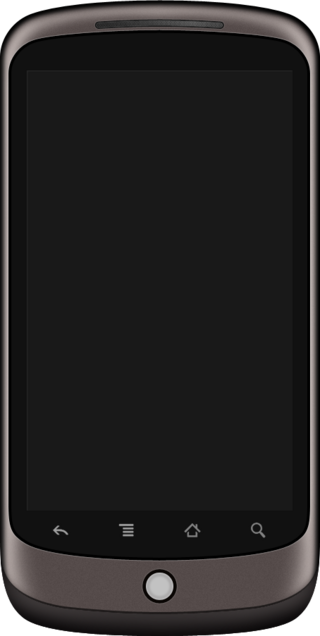
The Nexus One is an Android smartphone designed and manufactured by HTC as Google's first Nexus smartphone. The Nexus became available on January 5, 2010, and features the ability to transcribe voice to text, an additional microphone for dynamic noise suppression, and voice guided turn-by-turn navigation to drivers.

HTC Sense is a software suite developed by HTC, used primarily on the company's Android-based devices. Serving as a successor to HTC's TouchFLO 3D software for Windows Mobile, Sense modifies many aspects of the Android user experience, incorporating additional features, additional widgets, re-designed applications, and additional HTC-developed applications. The first device with Sense, the HTC Hero, was released in 2009. The HD2 running Windows Mobile 6.5, released later the same year, included Sense. Following the release of the Hero, all future Android devices by HTC were shipped with Sense, except for the Nexus One, the Desire Z, the HTC First, the Google Pixel and Pixel 2, and the Nexus 9 which used a stock version of Android. Also some HTC smartphones that are using MediaTek processors come without HTC Sense.

HTC is the original design manufacturer for many Android and Windows Phone-based smartphones and PDAs. Brands that market or previously marketed HTC-manufactured products include Dell, Fujitsu Siemens, HP/Compaq, i-mate, Krome, O2, Palm, Sharp Corporation, and UTStarcom. HTC also manufactures ultra-mobile PCs, and is also the manufacturer of the Nexus One and Nexus 9, a smartphone and tablet designed and branded by Google, respectively.

The HTC Evo 4G is a smartphone developed by HTC Corporation and marketed as Sprint's flagship Android smartphone, running on its WiMAX network. The smartphone was launched on June 4, 2010. It was the first 4G enabled smartphone released in the United States.
Rooting is the process by which users of Android devices can attain privileged control over various subsystems of the device, usually smartphones and tablets. Because Android is based on a modified version of the Linux kernel, rooting an Android device gives similar access to administrative (superuser) permissions as on Linux or any other Unix-like operating system such as FreeBSD or macOS.
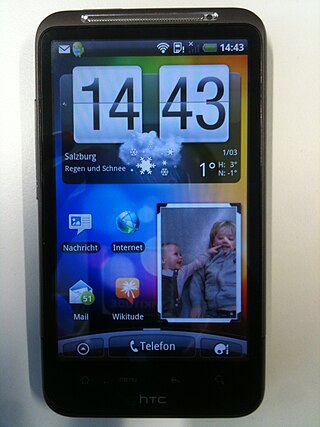
The HTC Desire HD is an Android smartphone by HTC Corporation. It was unveiled at a press event in London hosted by HTC on September 15, 2010, and was made available for sale in October in Europe and in January 2011 in Canada. The Desire was HTC's fourth flagship Android device until the release of their new line of flagship model, the HTC Sensation.

The Nexus S is a smartphone co-developed by Google and Samsung and manufactured by Samsung Electronics for release in 2010. It was the first smartphone to use the Android 2.3 "Gingerbread" operating system, and the first Android device to support Near Field Communication (NFC) in both hardware and software.
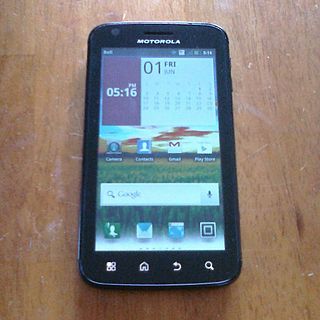
The Motorola Atrix 4G is an Android-based smartphone developed by Motorola, introduced at CES 2011 along with the Motorola Xoom, Motorola Droid Bionic, and Motorola Cliq 2 on January 5, 2011. It was made available in the first quarter of 2011.

The HTC ThunderBolt (ADR6400L) was the first 4G LTE smartphone on the Verizon Wireless network. It is a CDMA/LTE variant of the HTC Desire HD. It was first announced at CES on January 6, 2011.

The HTC Evo 3D is a 3D-enabled Android smartphone developed by HTC, released exclusively in the United States through Sprint, and was re-released as a pre-paid smartphone by Virgin Mobile in May 2012 as the HTC Evo V 4G. A variation of Sprint's flagship HTC Evo 4G, the device is distinguished by its pair of 5 MP rear cameras, which made the Evo 3D the first cell phone to do so, which can be used to take photos or video in stereographic 3D, which can be viewed on its autostereoscopic display without the need for 3D glasses. Several GSM variants are also available in Canada, Europe and Asia.

The HTC Incredible S (S710E) (s710d), also known as the Incredible 2, is a smartphone designed and manufactured by Taiwan's HTC Corporation originally running the Android 2.2 operating system. Officially announced by HTC on February 15, 2011 at MWC 2011 in Barcelona, Spain, alongside the HTC Desire S and the HTC Wildfire S, the HTC Incredible S was launched exclusively in the UK to Carphone Warehouse and Best Buy on February 26, 2011 marketed by Sarah Harding of Girls Aloud.
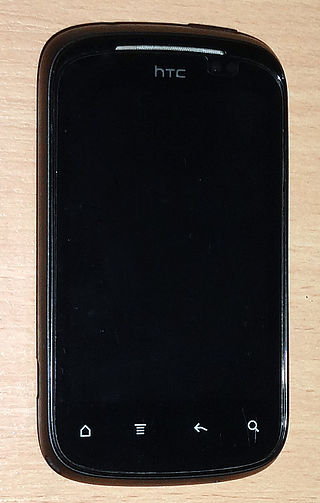
The HTC Explorer, code-named Pico, is a smartphone developed by the HTC Corporation that was released in October 2011. Because of the low end processor, the HTC Watch movie rental service and the 3D scrolling effects on the home screens were not available. The handset was available in four varieties of color options. Visually similar to the HTC Wildfire S, it comes with a 3.2-inch screen, a 600 MHz ARMv7 Qualcomm Snapdragon processor and runs Android version 2.3 (Gingerbread), bundled with the proprietary HTC Sense 3.5 user interface.
The HTC Raider 4G is a smartphone which was released on September 21, 2011, in South Korea. The phone is manufactured by HTC Corporation and runs Android 2.3 with included HTC Sense 3.0. It has since been upgradable to Android 4.0.3 with HTC Sense 3.6 in certain markets.
HTC Sensation XL is touchscreen-based, slate-sized Android smartphone manufactured by HTC. It was announced on October 6, 2011 by HTC on their Beats Audio event at London and released worldwide on October 26, 2011. The Sensation XL was HTC's second phone that was equipped with Beats Audio sound enhancer technology, after the earlier HTC Sensation XE. Two editions of the HTC Sensation XL were released; the only difference between these two models was that the limited edition was shipped with is Beats Solo's while the normal edition was shipped with the in-ear earphones of those on the Sensation XE.

The Verizon Droid Razr is an Android-based, 4G LTE-capable smartphone designed by Motorola that launched on Verizon Wireless on November 11, 2011. It was announced on October 18, 2011 in New York City.
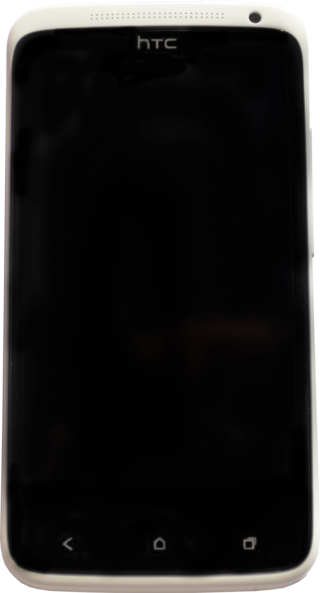
The HTC One X is a touchscreen-based, slate-sized smartphone designed and manufactured by HTC. It was released running Android 4.0.3, with the HTC Sense 4.0 skin. The One X is powered by the NVIDIA Tegra 3 for most international GSM carriers, making this the first HTC phone to be equipped with a quad-core processor, while a variant which is LTE capable is powered by the Qualcomm Snapdragon S4 dual-core 1.5 GHz Krait processor. The One X was announced on February 26, 2012, at the Mobile World Congress and was HTC's sixth flagship product, leading the HTC One series from the time of its release through April 2013, when its successor the HTC One (M7) was announced.

The HTC Evo 4G LTE is an Android smartphone developed by HTC Corporation to be released exclusively by Sprint. A successor to the previous HTC Evo 4G and 3D models, the Evo 4G LTE supports Sprint's LTE cellular network and its current-generation EV-DO network. The Evo 4G LTE shares features with its GSM counterpart, the HTC One X—such as the same dual-core 1.5 GHz processor used by the One X's LTE variant, a 4.7-inch screen, and Android 4.1 with HTC's Sense 4.0 interface. The Evo 4G LTE was also the first phone built with an all aluminum frame, leaving only a small plastic piece to allow the Sim and micro sd cards to be installed.
HTC One is a series of Android and Windows Phone smartphones designed and manufactured by HTC. All products in the One series were designed to be touchscreen-based and slate-sized, and to initially run the Android mobile operating system with the HTC Sense graphical user interface. The one exception to this is the HTC One (M8), which also had a Windows Phone variant. From 2010 to 2013, all HTC products starting from the HTC Sensation XE to the HTC One Mini were equipped with a Beats Audio equalizer. Later HTC devices beginning with the HTC One Max no longer ship with Beats Audio following the buyback of HTC's stake in Beats Electronics.
The Droid Incredible 4G LTE, also known as the HTC Incredible 4G or Incredible 3, is a smartphone designed and manufactured by Taiwan's HTC Corporation that runs the Android 4.0 operating system (ICS). Officially announced by Verizon on May 7, 2012, for CTIA, and released on July 5, 2012, through Verizon Wireless for $149.99 with a new two-year contract. The Droid Incredible 4G LTE is the successor to the HTC Incredible S.
The HTC Desire 601 is an Android smartphone designed and manufactured by HTC. The Desire 601 is a mid-range device carrying design traits from the HTC One and One Mini, utilizing a dual-core processor, 4.5-inch qHD display, and offering LTE support.













